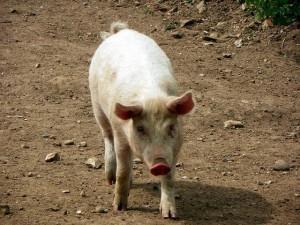According to the latest analysis by Quality Meat Scotland (QMS), the challenges faced as a result of an increase in the volume of meat available and a volatile export market is being felt across all livestock sectors.

The report revealed that European pig slaughterings in the first quarter of 2015 were almost two percent higher than last year and the volume of meat produced rose by about three percent.Stuart Ashworth, QMS head of economics services said: “The loss of export markets in Russia in February 2014 resulted in EU pigmeat exports falling by five percent during 2014 despite growth in exports to other countries, particularly China, Japan and South Korea.”He added that, with Russia still excluding EU pigmeat, the growth in sales to other markets was vital to maintaining demand.However, the mix of products demanded, the balance of fresh and frozen and recovering production in the United States means that, although exports may be maintained in volume, the market is increasingly competitive and the financial value can vary significantly. Notably, European export competitiveness has been boosted by a fall in the value of the euro against the US dollar.
Maintaining stability in the market“Carefully managing the removal of frozen pigmeat stored under the recent aid scheme, which must occur in most cases after 90 days of storage, will be important in maintaining some stability in the market.”
The European Commission was persuaded to introduce private storage aid for a limited period to support the market, after European pig prices had fallen to a point where they were some 18% lower than last year, at the beginning of 2015.“UK pig prices are well above the EU average and during the period of private storage UK pig prices quoted in Euro remained broadly steady at around €1.80/kg.“This left prices, in Euro terms, 6.5% lower than last year. The challenge here of course is that Scottish producers do not get paid in Euro but in Sterling and in Sterling the price is down more than 20% leading to some nervousness among producers.”
UpsideOn the plus side for producers, Ashworth noted that feed costs have fallen back sharply for a second year. Feed wheat is down 35% year-on-year and by nearly 50% from 2 years ago. Meanwhile, soyameal is around 15% cheaper to buy than in May 2014 and 20% lower in price than two years ago.
This story was originally published on a previous version of the Meat Management website and so there may be some missing images and formatting issues.














